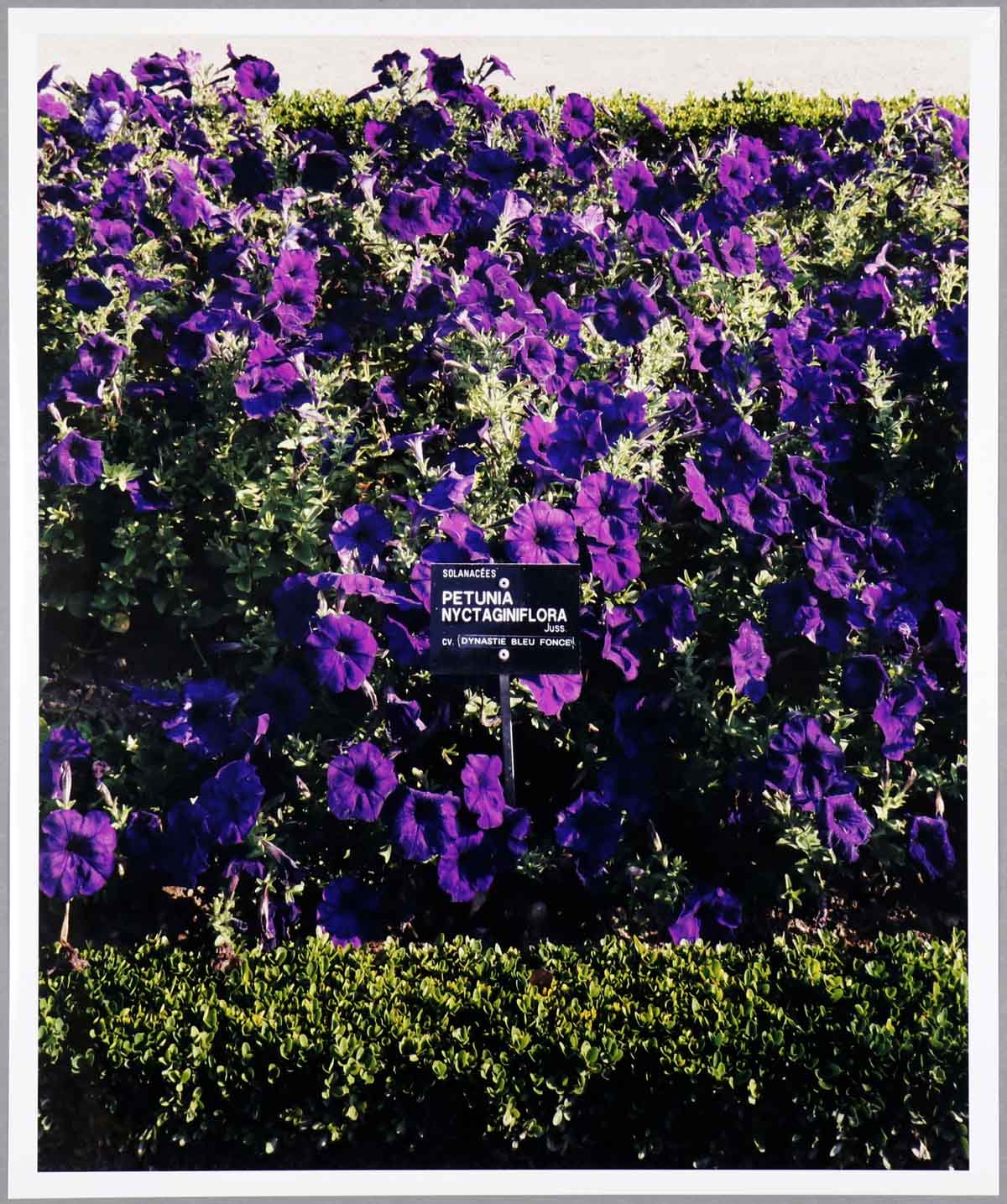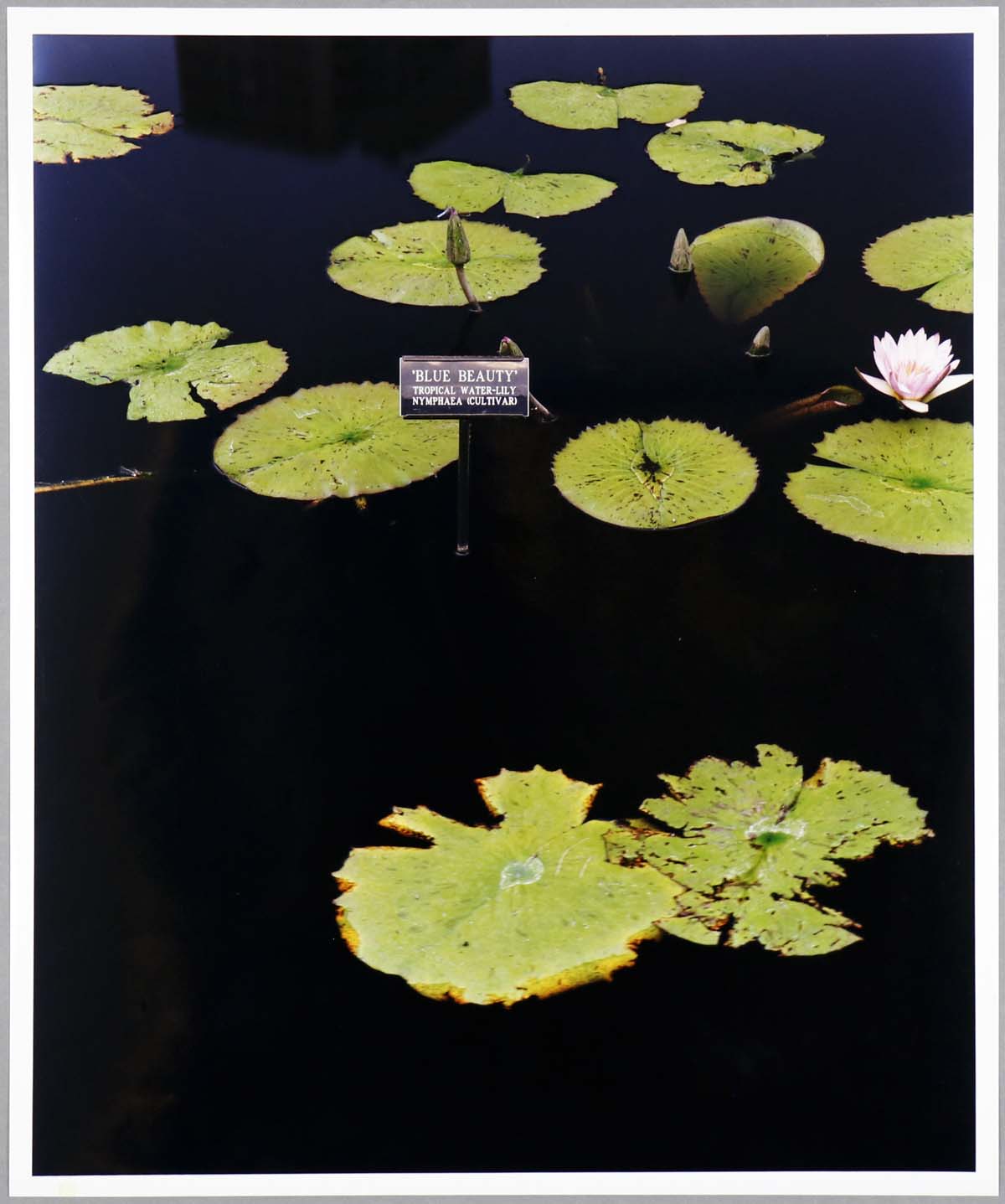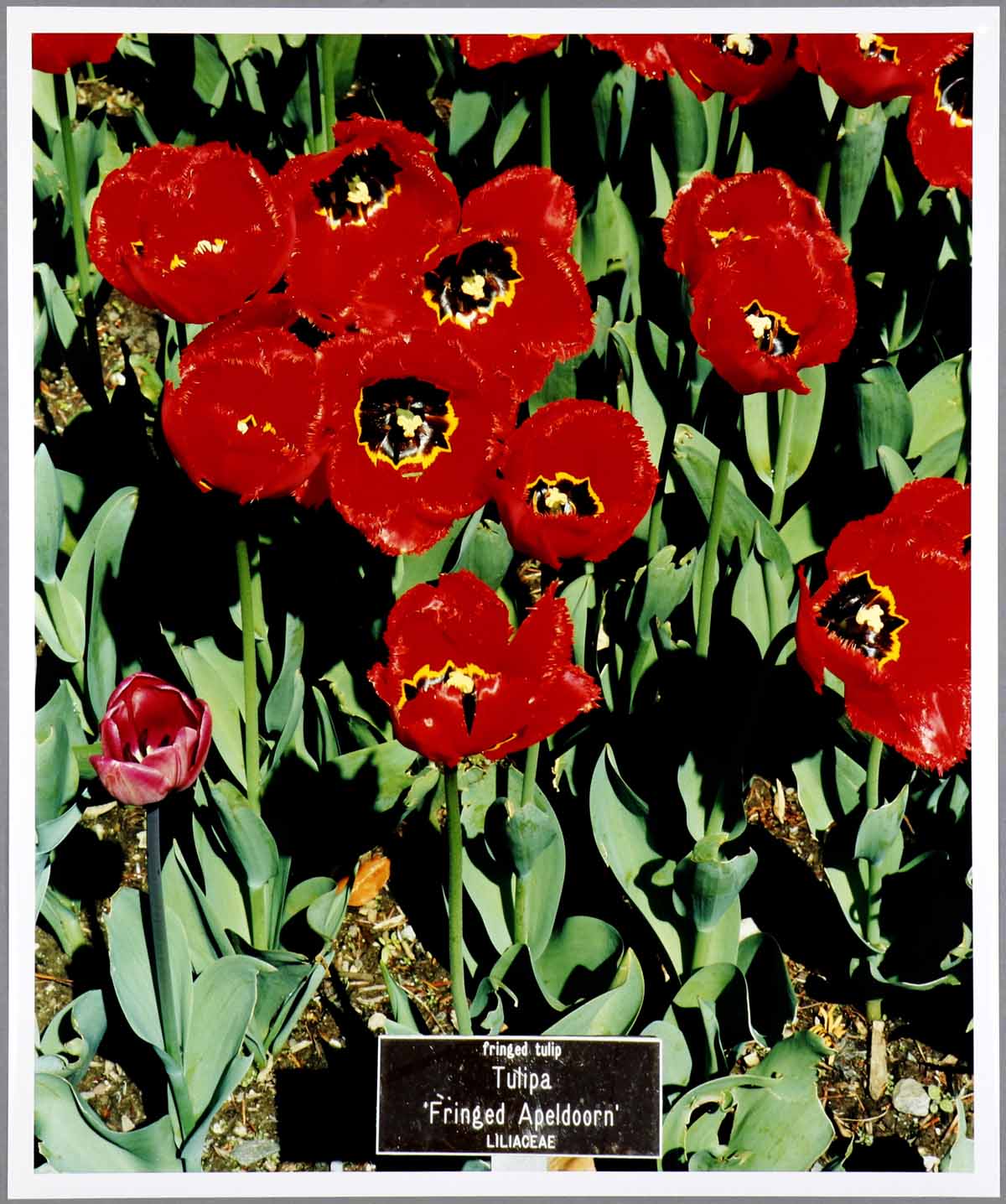‘
Neobuxdaumia Scoparia’. Written in white encyclopaedic letters on a black piece of metal and lightly fixed into the soil, the little plaque dutifully informs the visitor of the Latin name of the cactus towering above it; and unaffected, the thorny, powerful and self-sufficient organism takes little notice of man’s headstrong attempt to tame it by placing a tiny label at its base. From the outdoor spaces that enclose our homes and public gardens that offer much solace and joy, the desire to domesticate the wilderness - and in the process catalogue its entirety - has progressively formed a frontier between artful cultivation and the realities of contemporary life with its tendency to control. One duality investigated by the American photographer Lawrence Beck.
‘Duality’ has followed Beck throughout his life and artistic practice. In fact, Beck often mentions that growing up with a father who was in every aspect a rational New Yorker and an Italian mother teeming with passion, subconsciously led him to a university experience at Columbia University in New York combining romance languages with a major thesis on photography in ‘83. Along with the artist well-known investigation of the “wilderness” in the botanical gardens, Beck finds contrasts in dense man-made, almost theatrical staged, thickets often seen in managed forests; and later in his practice - in the collection of works titled ‘Italian Gardens’ (2011) - the artist guides the viewer within the manicured landscape garden surrounding Italian architectural masterpieces, from the Roman aqueducts to the Patrician villas of the Renaissance.
_2000.jpg)
LAWRENCE BECK
Neobuxdaumia Scoparia (1998), 2000
Edition of 250
4 Artist Proof (APs)
50(w) x 61(h) cm
20.00(w) x 24.02(h) inches
_2000.jpg)
LAWRENCE BECK
Neobuxdaumia Scoparia (1998), 2000
Edition of 250
4 Artist Proof (APs)
50(w) x 61(h) cm
20.00(w) x 24.02(h) inches
|
|
|
50(w) x 61(h) cm
20.00(w) x 24.02(h) inches
|
Chromogenic print
Signed and numbered on verso
Only 25 printed of the edition of 250.
Edition of 250
|
|
Beck is an astute observer of cultural codes - where some images are perceived differently by viewers depending on background or professional life - and methods of scientific containment, and the artist manifests these observations through photographs of botanical life. Born in 1962 and a child of a time dominated by the minimalists and conceptualists, the artist’s earliest methods were highly influenced by the movements at the time, and established Beck among the rising stars within Photo Conceptualism; a genre within photography where the idea and concept dictate the work.
In the series ‘Botanical Gardens’ (1999), Beck gently focuses on a botanical subject matter concerned with pressing contemporary themes; ecological issues, as well as the methods used by scientists to ‘optimise’ nature. These ideas are explored in
Dynastie Bleu Fonce, where the cropped perspective and strong line of the perfectly pruned hedge show the strict boundaries the grower has placed around this abundant flower. The blooms are bursting open, filling the entire image, which only emphasises the sense of restrictiveness they encounter in the space they occupy.
Nearly all of Beck's flower studies feature an element which, with repetition, comes to feel like the key emphasis; a botanist's label identifying the plant's common name and genus. While the typically central placing of this label delivers structural certainty to the image, it also functions to dominate nature through naming and defining. The
Fringed Apeldoorn has its name tag prominently displayed, a duality mediating beauty with indexation and raising an odd question; is there a necessity for flora to be ‘read’ and understood intellectually in order to be properly appreciated?

LAWRENCE BECK
Dynastie Bleu Fonce (1999), 2000
Edition of 250
4 Artist Proof (APs)
50(w) x 61(h) cm
20.00(w) x 24.02(h) inches

LAWRENCE BECK
Dynastie Bleu Fonce (1999), 2000
Edition of 250
4 Artist Proof (APs)
50(w) x 61(h) cm
20.00(w) x 24.02(h) inches
|
|
|
50(w) x 61(h) cm
20.00(w) x 24.02(h) inches
|
Chromogenic print
Signed and numbered on verso
Only 25 printed of the edition of 250.
Edition of 250
|
|
The initial impact and beauty in his images whether it of cacti, tulips, and water lilies, come from the plants themselves as Beck favours a transparent presentation. He doesn't manipulate his photographs and shoots exclusively in natural light, but aesthetic pleasure is far from being the motive of his works; their native gorgeousness is a balance to the work's conceptual component.
The photographer’s tendency is not to editorialise, but to reveal the world as it is; there is rarely a message in his cropping. Within the confines of his project there is room for nuance and one of the delights of Beck's work is its subtle, directive wit. Several photographs, such as
Blue Beauty, feature water lilies floating on a pond with their identification label rising like a reed from the water - and in these works the viewer realise in fact, that it is a long way from Claude Monet’s impressionist paintings from the nineteenth’s century.

LAWRENCE BECK
Blue Beauty (1998), 2000
Edition of 250
4 Artist Proof (APs)
50(w) x 61(h) cm
20.00(w) x 24.02(h) inches

LAWRENCE BECK
Blue Beauty (1998), 2000
Edition of 250
4 Artist Proof (APs)
50(w) x 61(h) cm
20.00(w) x 24.02(h) inches
|
|
|
50(w) x 61(h) cm
20.00(w) x 24.02(h) inches
|
Chromogenic print
Signed and numbered on verso
Only 25 printed of the edition of 250.
Edition of 250
|
|
Such humorous aspects, however, do not override the essential seriousness and responsibility of Beck's work. A photograph of flowers growing beside a polished gravestone seems out of place with Beck’s other works, but his series on funerary flowers helps to inform the rest of the work, as it subtly inflects with morbidity the reading of the identification markers on other flower photographs. Beck's subject is man’s disruption of ‘the natural’ and therefore its death in one sense. His work is both a clear-eyed poem for wild nature's passing, and a fascinated gaze at what is rising in its place.
Since Beck’s inclusion in the exhibition ‘Fantastic Imagery’ in 1995, his work has been widely exhibited at art institutions, solo shows and group exhibitions around the world, and a regular participant at art fairs such as Art Basel. His latest solo exhibitions ‘Italian Gardens’ and ‘The Thickets Revisited’ presented some of his distinguished works created between 2003-2011. Beck lives and works in New York.

LAWRENCE BECK
Fringed Apeldorn (1998), 1999
Edition of 250
4 Artist Proof (APs)
50(w) x 61(h) cm
20.00(w) x 24.02(h) inches

LAWRENCE BECK
Fringed Apeldorn (1998), 1999
Edition of 250
4 Artist Proof (APs)
50(w) x 61(h) cm
20.00(w) x 24.02(h) inches
|
|
|
50(w) x 61(h) cm
20.00(w) x 24.02(h) inches
|
Chromogenic print
Signed and numbered on verso
Only 25 printed of the edition of 250.
Edition of 250
|
|
From the artist’s break-through series, ‘Botanical Gardens’, four photographic editions in colour were released in 2000 in an exclusive collaboration between
Lawrence Beck, Sonnabend Gallery in New York and Eyestorm. The editions,
Blue Beauty,
Dynastie Bleu Fonce,
Fringed Apeldoorn and
Neobuxdaumia Scoparia, were printed as Chromogenic prints, and each in edition of 250, from which only 25 were ever printed, signed and numbered by Beck.
You can find more information about the four photographic editions from ‘Botanical Gardens’ and see the works in further detail on
Lawrence Beck artist page
here.